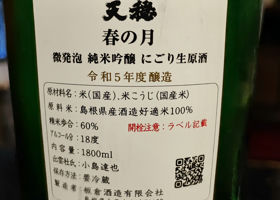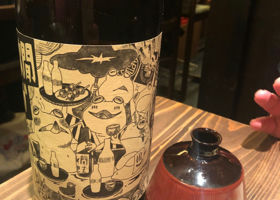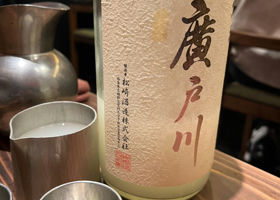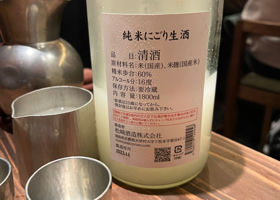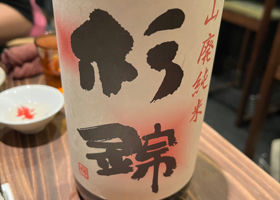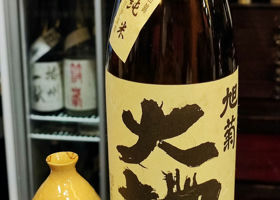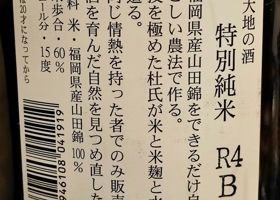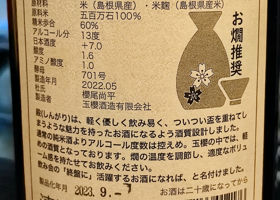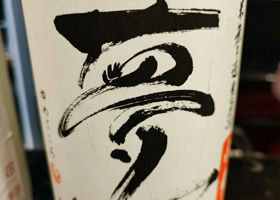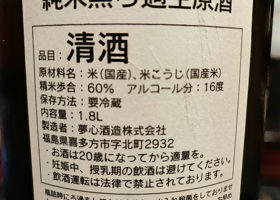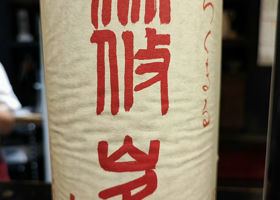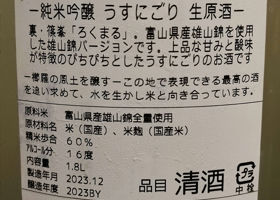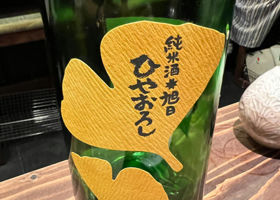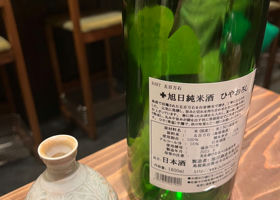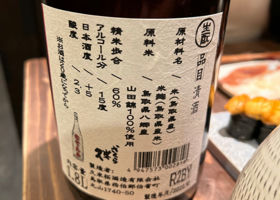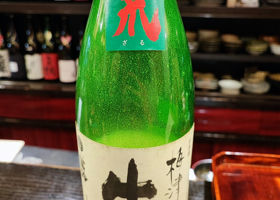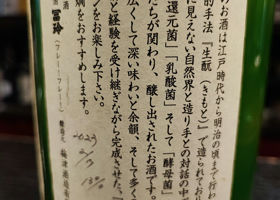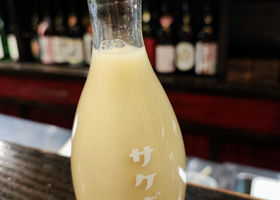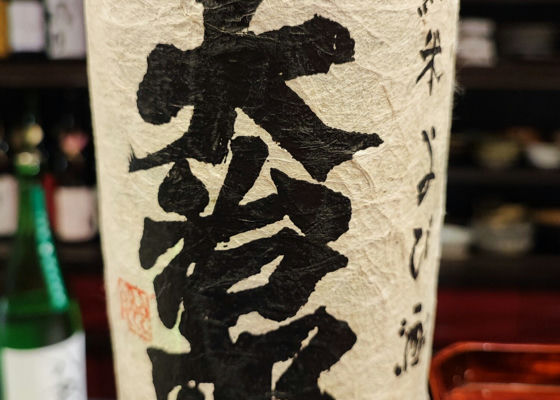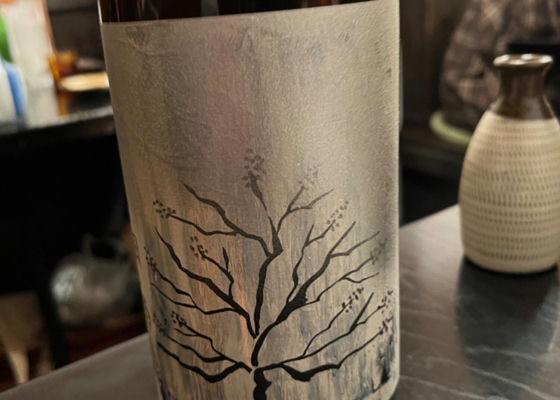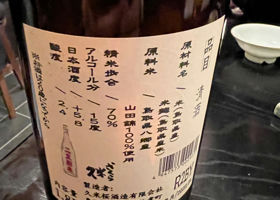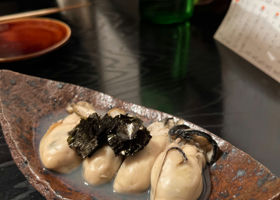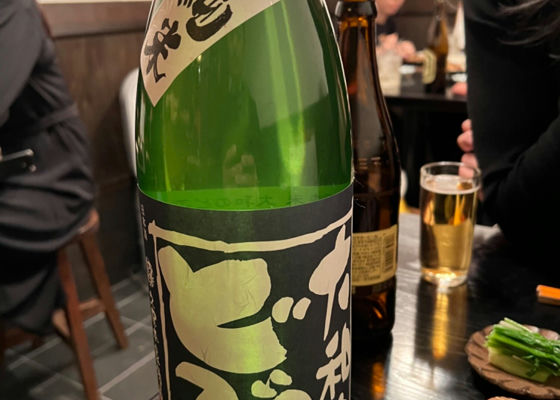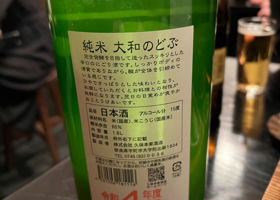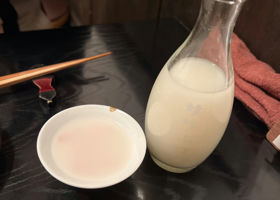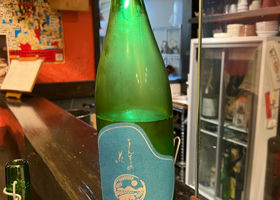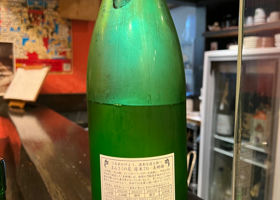Timeline
ぐがげごMild mouthfeel. Moderate sweetness. Slightly acidic. Soft water. And umami at the end. ぐがげごSoft mouthfeel like white sake. The light acidity, perhaps due to the carbonation, is pleasant. じゅんさんKitajima KAN TOAD - Shimotsuki Ver.
Yamadanishiki, additive-free yeast, pure rice sake
The last of the hot sake, KANGAERU, is a yeast additive-free version of YAMADA NISHIKI.
Dry hot sake is delicious.
Ingredients : Rice(domestic), Rice malt(domestic)
Rice type used: Yamadanishiki
Rice Polishing Ratio:55
Sake meter rating: +5.5
Acidity: 1.8
Yeast used: No yeast added
Alcohol percentage: 17
Chabujyoji じゅんさんHirotogawa, Fukushima, Junmai Nigori Nama
Brilliant and sharp
Balance of sweetness and acidity
Creamy, naturally drink it cold.
It goes down well.
Rice used: "Yumenokou" from Fukushima Prefecture
Polishing 60
Strength 16%.
Chubajinji じゅんさんIt is the season for hot sake.
Sugi Nishiki from Shizuoka, Tamae Yamahai Junmai
Sake meter rating +13
Acidity 1.6
Alcohol content 15.5
Rice: 100% Tamakae from Shiga Prefecture
Rice polishing ratio 65% (only the rice used for the 720ml sake is 70%, all other rice is 65%)
Yeast used: Kyokai No. 701
Chabujinshi ぐがげごSake that has few peculiarities and can be drunk plainly. It has a strong full-bodied flavor and umami, with a really faint bitterness at the end. It has an honorable taste. ぐがげごGentle and fluffy warmed sake. It has a slightly old sake-like feel to it, but only slightly. Soft and fluffy sake. ぐがげごNo sticky sweetness, refreshing sweetness, a good amount of strength, and a light acidity at the end for a good balance. ぐがげごBoth the front and the back of the bottle are carbonated and refreshing. It has a gentle sweetness due to its light nigori taste. It is an elegant sake that does not make you feel the alcohol content. じゅんさんThe last sake of the day was from Shimane.
Ten Asahi Hiyahiroshi (Hiyahiroshi)
A dry junmai that tastes very good hot.
Rice: Shimane Gohyakumangoku
Polishing 70%.
Yeast: Association No. 701
Sake degree +10.5
Sakumoji じゅんさんI wanted a slightly dry cold sake, and Kushira's Junmai Ikki Hara Sake came up. Probably this year's sake.
It is a sake made from rice grown in their own rice paddies.
Alcohol content: 16%.
Rice, Rice Koji/60% Yamadanishiki produced in Kushira, Gosho City, Nara Prefecture (in-house cultivated)
Raw yeast / Association No. 6
Fire-quenched / Unfiltered
Sakujoushi じゅんさんKume cherry blossoms in Tottori. Encountered again.
First time in 7 months.
Dry, robust sake suitable for hot sake.
Rice: Yamanishiki produced in the Yamada rice field in Yatsugo, Tottori Prefecture.
Rice polishing ratio: 60
Alcohol content: 15%.
Yeast: No yeast added
Sake meter: +5, Acidity: 2.4, Amino acidity: 2.3
Sakujoushi
ぐがげごThis sake came out at the request of the customer for a strong heated sake.
It looks like a white sake, but tastes much more like a dry Shaoxing sake.
In other words, it is less sweet, full-bodied, and smoky.
Personally, I am familiar with the taste.
Incidentally, the alcohol content was watered down from 21% to 13% at the store.
I wonder what it would taste like if it were not watered down and heated.
ぐがげごThis sake came out with the designation of a heated sake with a strong umami flavor.
As requested, this sake has a soup-like umami in the extreme.
The sweetness of the junmai flavor was followed by a bitterness at the end, which was nice. ぐがげごSake with the flavor of old-fashioned sake.
It has a slightly old sake-like flavor. ぐがげごThe first mizu-hashiroshi. Soft and fluffy mouthfeel.
After swallowing it, you feel a little bit of a habit. Is this mizu-hashiroshi? じゅんさん(2BY) Kume-Zakura, Ten winds and five rains
Another hot Kume-Zakura, which means another glass.
This one is named and has a nice label.
This one as a hot sake is the best.
It's clearer and more umami than the standard Kumezakura. If you are in good spirits, you can go for more.
Goes well with grilled nori oysters with salt.
Rice: Yamadanishiki produced in Yatsugo, Tottori Prefecture
Rice polishing ratio 70%.
Sake degree +5.8
Acidity 2.4
Strength 15.0
Sake Brewer Kumezakura Shuzo (Tottori Prefecture) じゅんさんToday is hot sake day.
Next up is Kumezakura from Tottori. The label is cute.
The theme of YAGOOO, now in its 21st year, is
Cosmic Universe.
The taste is not as impressive as the label, but it is a dry, robust sake suitable for hot sake.
Rice: Yamanishiki produced in-house in the rice fields of Yatsugo, Tottori Prefecture
Rice polishing ratio: 60
Alcohol content: 15%.
Yeast: No yeast added
Sake meter: +5
Acidity: 2.4
じゅんさんIt has been a while since I have been to Sashisu in Kyoto!
Miraculously, I was able to get a reservation for the evening of the same day!
I asked for Nara's sake today, a hot sake, but was told that the brewery was currently preparing it and that it was out of stock.
I asked for Nara's Namo Hashiroshi Dobu hot sake, but was told it was out of stock because the brewery was in the process of preparing it!
This sake has a nice acidity and goes in very smoothly.
I recommend this one too!
Ingredients: Gohyakumangoku, Nihombare
Polishing ratio 65
Taste: Good sharpness じゅんさんThe rice used for sake changes every month.
Explanation on the back label. This September 2022 is Misato Nishiki.
It is interesting to be able to compare the sake each month, and the homepage also has an illustrated explanation of the sake rice, which is quite informative.
Well, I didn't care about that at all when I was drinking.
Specified name: Junmai Ichigatsu Hi-ire Genshu (pure rice)
Koji rice: Misato Nishiki produced in Akita Prefecture
Kake rice: Misato Nishiki produced in Akita Prefecture
Rice polishing ratio: 70
Alcohol Content : 16
Sake Degree: ±0
Acidity: 1.8
Amino acidity: 0.7
Yeast: Akita NO.12
Nishi-daikoku-cho, Nishi-daikoku-cho, Nishi-daikoku-cho, Nishi-daikoku-cho RecommendedContentsSectionView.title





